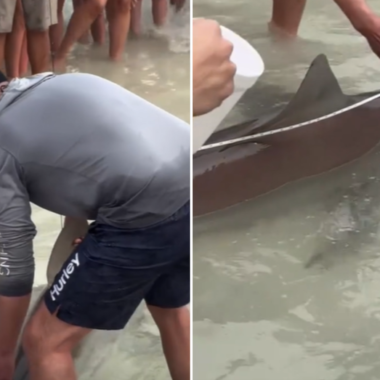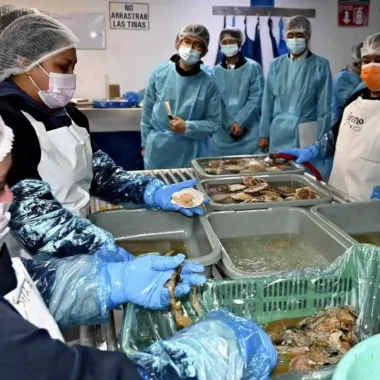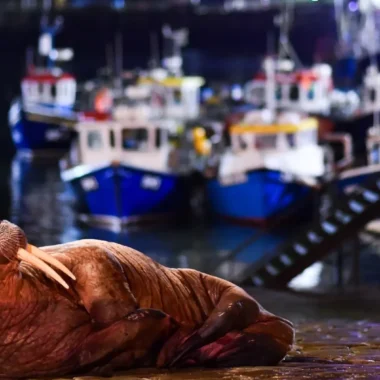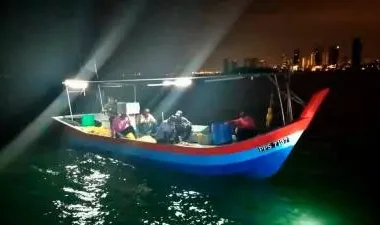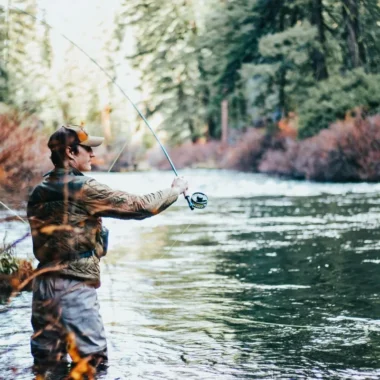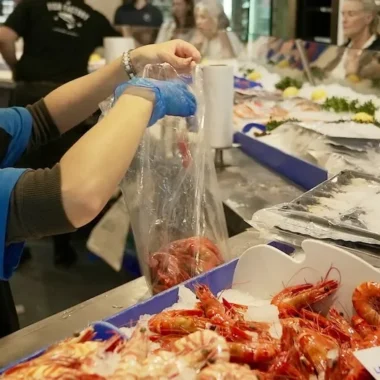When tourists head to northern Australia, many people want to try some local, wild-caught barramundi.
Jason Hanna, who owns nine restaurants across Darwin, said barramundi was always “extremely popular”, outselling other fish two-to-one.
“I think our tourists want to eat something that we’ve been spruiking as iconic — that’s a fresh wild-caught barramundi,” he said.
“People want quality, they’re prepared to pay for it, and they’re definitely prepared to pay for local.”
But with increasing pressure on the wild-caught barramundi industry, is the future of this iconic dish in trouble?
Concerns raised about gill nets
For decades, the commercial fishing sector in northern Australia has used gill nets — long rectangular nets placed near river mouths — to catch barramundi.
But the use of the nets has been called in to question by a range of different groups.
The Australian Marine Conservation Society (AMSC) has called for a phase-out of the use of gill nets to protect threatened species.
“Gill netting is indiscriminate in the threatened species it catches and when it has been poorly managed, we see some really disastrous outcomes,” AMSC scientist Leonardo Guida said.
Last year, Arnhem Land traditional owners suspended commercial access to areas which had been some of the most important fishing grounds for the sector.
“Traditional owners have deep, increasing concerns about the impacts of commercial fishing practices, particularly gill netting, and the impact on barramundi fish stocks that they are seeing in their communities,” a Northern Land Council spokesperson said.
With the loss of access in Arnhem Land, restrictions were placed on commercial boats forced into areas normally only fished by recreational fishers.
The Amateur Fishermen’s Association of the NT (AFANT) criticised the restrictions and called for quotas on commercial fishers and for the NT government to consider buying back fishing licences.
Meanwhile, in Queensland, the state government is phasing out the use of gill nets in the Great Barrier Reef World Heritage Area and will place more restrictions on gill net use in the Gulf of Carpentaria in May.
Industry fighting for its future
With pressure coming from all sides, the NT Seafood Council (NTSC), which represents the commercial sector, has hit back with an advertising campaign.
“Don’t let fear mongering and mistruths take away your right to have your share of the iconic Northern Territory barramundi,” the NT Seafood Council advertisement said.
The NTSC rejected suggestions the industry and the use of gill nets was unsustainable and that it put threatened and endangered species at risk.
Chair Joanne Butterworth-Gray said the industry was in a fight for its future.
“If we want to ensure the public can have iconic barramundi at the pub or buy it in the fish shop, then we need commercial fishing to exist,” Ms Butterworth-Gray said.
“It’s not just the generations of commercial fishers that are fighting for their futures, it’s the future of the young people who are coming up through those families.”
The NTSC said it was rolling out real-time monitoring on commercial vessels “to provide transparency and accountability”.
Is the barramundi population under threat?
The NT’s commercial catch has been on a steady decline over the past decade, with the sector harvesting 160 tonnes in the eight-month 2023 season, down from 435 tonnes in the 2013 season.
NT Fisheries estimate recreational fishers caught and took home somewhere between 88 and 186 tonnes of barramundi over the 2023 calendar year.
AFANT chief executive David Ciaravolo said he was not concerned with overall barramundi stock sustainability.
“[Rather], the issues relating to localised depletion caused by the use of gill nets, impacts on tourism experiences caused by gill netting,” Mr Ciaravolo said.
“The concentration of gill netting at the Daly and Roper catchments, and the constant concern and uncertainty over the future of the experiences, value and jobs in the recreational and tourism industry, given there is too much net and seemingly perpetual conflict.”
NT Fisheries said the reduction in commercial catch reflected the diminishing fishing grounds available to the commercial sector rather than a barramundi population decline.
“The maximum sustainable yield for barramundi is estimated at approximately 1,500 tonnes, meaning the barramundi fishery across all sectors is sitting at approximately 22 per cent of what could potentially be sustainably harvested,” a spokesperson for NT Fisheries said.
However, Mr Ciaravolo said NT Fisheries estimates were “problematic because a good chunk of [the NT coastline] could not be ‘potentially harvested’ last season and cannot be harvested this season”.
Plenty of farmed barramundi
While the wild-caught sector is on the decline, the amount of farmed barramundi produced in Australia has continued to grow.
The farmed barramundi sector pumped out nearly 12,400 tonnes of fish in the 2022/23 financial year.
Humpty Doo Barramundi, Australia’s largest fish farm, produced 150 tonnes in just one week leading up to Easter last year.
But Australia is still importing a huge amount of barramundi.
About 15,000 tonnes of barramundi — about 60 per cent of all that is consumed in Australia — is imported each year, mainly from south-east Asia, according to the Australian Barramundi Farmers Association.
Is this the future for wild caught barramundi?
North Queensland fisherman Chris Bolton knows he’s living many people’s dream — spending time on his boat, rod in hand, catching barramundi — and he’s getting paid to do it.
“It’s what I have wanted to do since I was five years old, now I’m actually doing it and making a decent living,” he said.
Selling line-caught barramundi was only made legal in Queensland this year and Mr Bolton is believed to be the only commercial fisherman to take up the practice to date.
He sells his catch to high-end restaurants in the big cities but knows plenty of people wouldn’t be able to afford his product.
“It’s prices unheard-of before for barramundi, but as I said to the chefs, it’s fish of a quality that you’ve never seen before,” he said.
“It probably will put wild-caught barramundi out of reach for the average person — line caught barramundi is going to be far more expensive than net-caught.”
What’s next for the industry?
A number of groups who have expressed opposition to the commercial barramundi sector and its use of gill nets met in Darwin this week, discuss the future of the industry.
The NT Seafood Council was not invited to the forum but said it would continue to advocating “to keep wild-caught barramundi available for everyone”.
NT Fisheries is working on a long-term review of the barramundi fishery, which is expected to be handed down later this year.
In the meantime, restaurateur Mr Hanna said if commercial barramundi fishing was phased out, plenty of people would miss out.
“Not everyone gets to go fishing … and I know we miss things when they’re gone,” he said.


